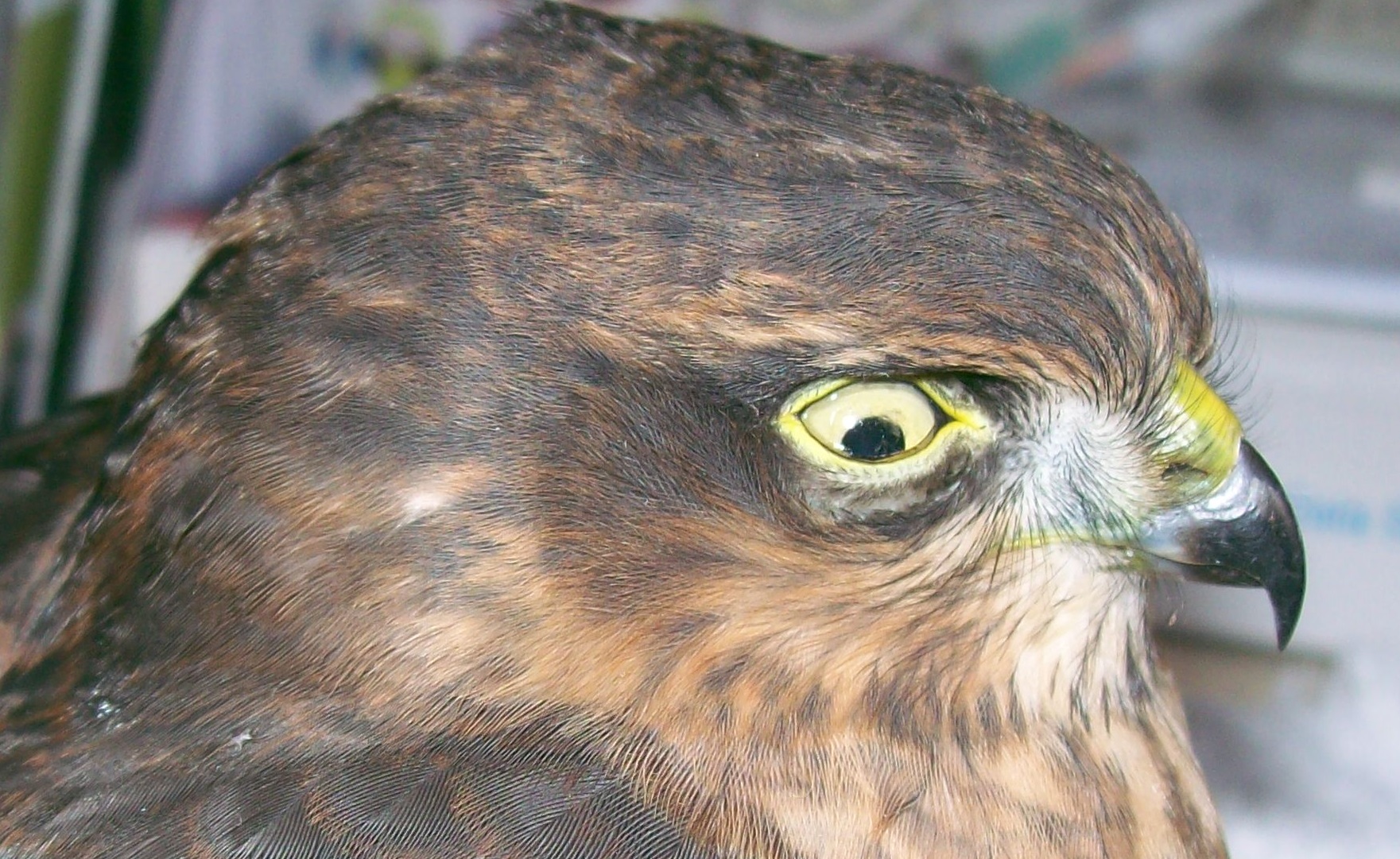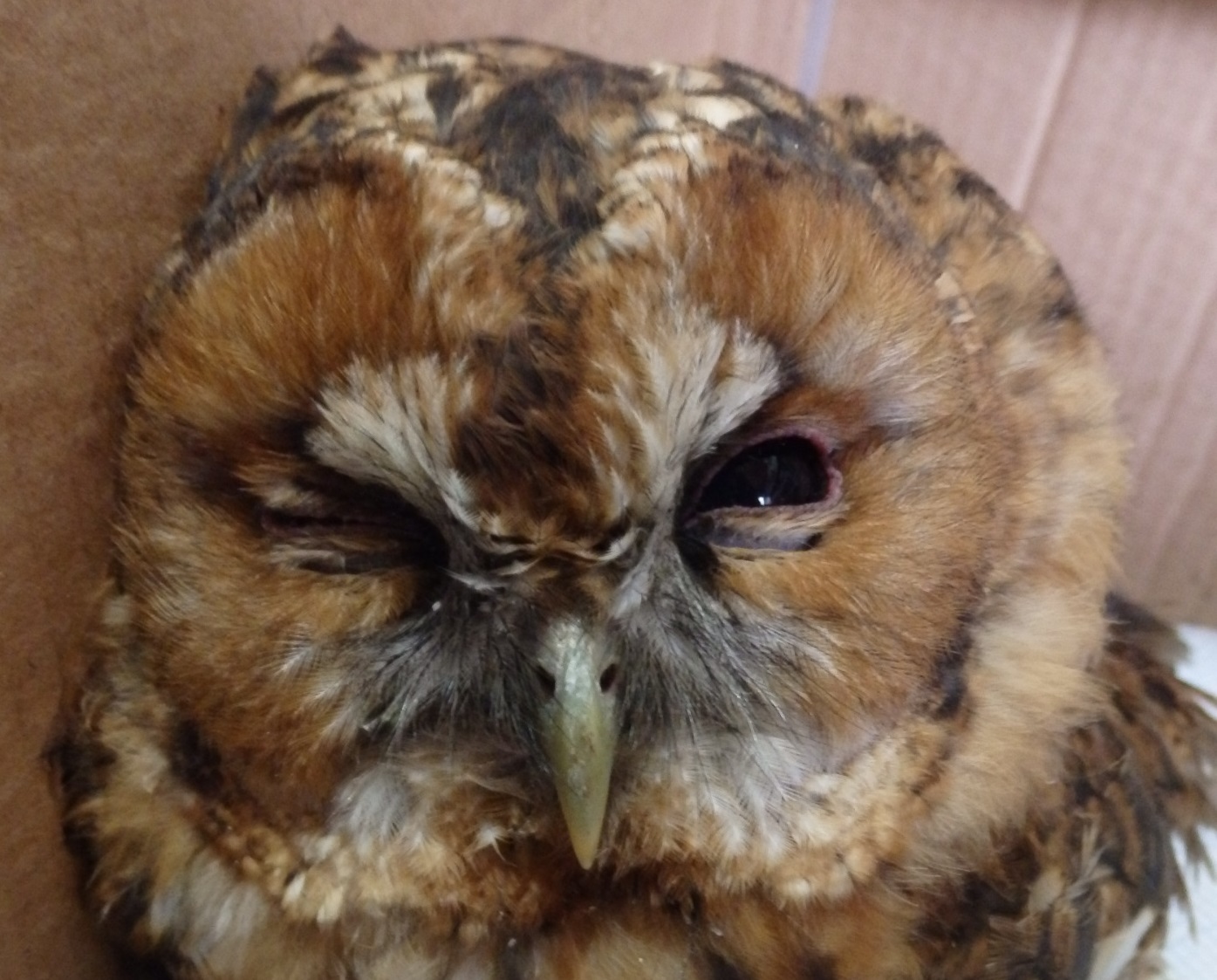Window Collisions
It is estimated that in the States around 100 million birds are killed each year due to window collisions. We have found during the spring and summer months a lot of these 'window strike' casualties are juvenile garden birds that haven't yet become 'window wise'. Sometimes these birds are merely stunned and will make a full recovery relatively quickly. Others sadly aren't so lucky, and will sustain severe bruising, concussion, fractures and even death.
 Sparrowhawk window collision
Sparrowhawk window collision
If you find a dazed 'window strike' casualty you will need to place the bird in a dark container with a lid. Place a soft cloth or kitchen paper in the bottom of the box, and a few air holes along the sides. The darkness of the container will help to calm the bird as it recovers, and it's best NOT to handle the bird more than absolutely necessary. DON'T place any food or water in the box, as a bird won't eat in a dark environment, and if concussed could easily drown in the water. Place the box in a warm and quiet place away from pets and children, and leave the bird for several hours to fully recover before releasing. However, if the bird hasn't fully recovered until late in the evening, DON'T release it, unless of course the casualty is an Owl. Keep the bird boxed overnight and release it back where it was found early the following morning. If your 'window strike' casualty is unable to fly off after several hours of recovery time, or the bird has visible injuries, you will need to contact a wildlife rescue for further help and advice.
 Tawny owl window collision causing concussion and injury to right eye
Tawny owl window collision causing concussion and injury to right eye
Making your windows safer for birds
Bird strikes often occur at the same window or patio door, so it may be a simple matter of moving your bird feeders, or bird bath, to another spot in your garden. Feeders situated too close to a window, or patio door, can be responsible for 'window strikes' as panicking birds flee for cover as they try to escape a predator attack. Our advice is... "go outside near your feeders and look at your windows from a bird's point of view. If you're able to see the surrounding trees, sky, or clouds reflecting in the glass, your garden birds can as well. If you have a clear view into your house, then the birds can as well. Is there another window on the opposite wall to the window or patio door? If so, it may be giving your garden birds the illusion that they can simply fly straight through. If any of the above window problems apply to you, then it will be necessary to break up the window reflection, or prevent the birds from flying through." One solution is the use of window stickers, some are available as decorative bird shapes, others look like spider webs. A quick temporary solution is to hang, or stick, lightweight shiny objects in front of the particular 'problem window' or patio door. A cheap and cheerful solution is to stick long strips of tin foil to the outside of the window or door and, as it flutters in the breeze, birds are consequently warned and dissuaded from approaching. Other excellent warning items that can be used, and are feely available are, old aluminium pie plates, or unwanted CD's.